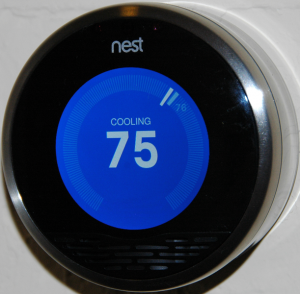Emerging Technologies Can Pave the Way for Time-Variant Electricity Pricing
 The amount of energy we use at any given time is constantly changing. Lights are switched on and off by time of day – other appliances, such as air conditioners, might operate based on the season. In order to meet our dynamic energy demands, our system has to have the infrastructure and resources in place to respond when needed.
The amount of energy we use at any given time is constantly changing. Lights are switched on and off by time of day – other appliances, such as air conditioners, might operate based on the season. In order to meet our dynamic energy demands, our system has to have the infrastructure and resources in place to respond when needed.
What may not be clear to many of us is that the costs associated with supplying this electricity also change with time, and during certain hours of the day and year these costs can be much higher. This isn’t readily apparent because the electricity rates we pay throughout the year are essentially flat.
Many, including Environmental Defense Fund (EDF), have made the case for electricity pricing that helps signal these fluctuating costs to customers. There are a variety of ways to design pricing that varies with time, while communicating to individuals and businesses the value of cutting back on electricity, or shifting use to other times. These options can take the form of paying a different amount for energy at different times, or perhaps being compensated for reducing use at times when the electric system is most constrained.
Smart meters and time-variant pricing
Though these pricing concepts (also known as “time-variant electricity pricing”) have been around for some time, recent advances in technology have made it both easier to implement time-variant electricity pricing as well as leverage the greater transparency in electric system costs.
One technology with the potential for enabling this dynamic or time-variant pricing is advanced or smart meters. In contrast to legacy electric meters that only allow for one energy reading per month (usually done manually by an actual person visiting a home or business to read the meter), smart meters can record electricity use remotely and more frequently, often in 15-minute intervals. These smart meters, along with the communication and data management infrastructure necessary to support them, allow customers to see how much energy is used and at what times, making it easier to make informed energy decisions.
Smart meters have already reached a significant level of deployment. In fact, as of July 2014, 50 million smart meters have been deployed across the country. Smart meter deployment at this scale could translate into lower transaction costs for businesses and energy service providers that rely on this data to develop products and services. This, in turn, could result in the design of additional products and services for customers that also meet the specific needs of local markets.
Deploying smart meters to better communicate energy usage data may help customers see what appliances or actions result in higher electricity use than others. However, to really get a sense of how this usage translates into costly investments and expenses to the system, this data should also be coupled with time-variant pricing in a manner that is both transparent and accessible to customers.
Advances in technology
Advances in technology available to individual homes and businesses have come a long way in not only increasing transparency of energy costs, but also in increasing the ease with which we manage our energy use. Technology companies have designed products and services not simply around the benefits to the electric system, but in a manner that increases comfort, convenience, and overall value for their customers.
For instance, Google-owned Nest has coupled its advanced thermostats with signals from utilities to inform customers when ‘rush hours’ for electricity use occur, making it easy for customers to automatically respond by reducing or shifting energy use. ThinkEco has also extended this sort of energy management to window-installed air-conditioners and other appliances. GE and Quirky have made great strides in creating a ‘connected home’ – whereby various home appliances are coordinated with each other in accordance with a family’s schedules. These offerings highlight that energy management services, when designed well, can benefit the electric system and actually be appealing to the everyday consumer.
These advanced and emerging technologies services, however, can only take us so far in managing our dynamic energy costs. Customers, too, need to be informed and incentivized through pricing to cut back on electricity or shift use to times when electricity is cheaper. Knowing when electricity is most costly can be helpful in managing customer and system costs, and enabling technologies such as these allows individuals to use this knowledge to modify their behavior.
Photo source: Wikipedia
For more information, check out our new time-variant pricing fact sheet.











